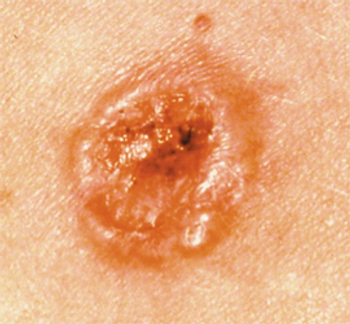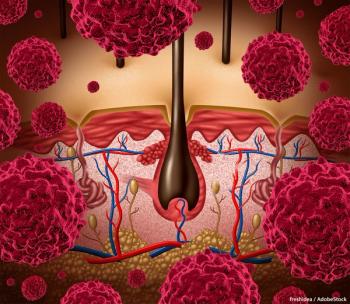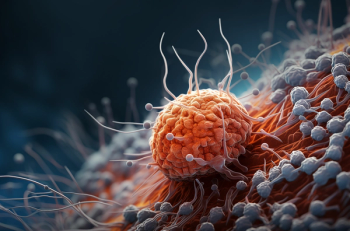
Novel, Immune Therapies Promising in Nonmelanoma Skin Cancers
Treatment of keratinocyte carcinomas such as basal cell carcinoma and cutaneous squamous cell carcinoma with PD-1 checkpoint inhibitors and targeted agents warrant further investigation, according to recently published studies.
[[{"type":"media","view_mode":"media_crop","fid":"57441","attributes":{"alt":"","class":"media-image","id":"media_crop_4228414641294","media_crop_h":"0","media_crop_image_style":"-1","media_crop_instance":"7234","media_crop_rotate":"0","media_crop_scale_h":"0","media_crop_scale_w":"0","media_crop_w":"0","media_crop_x":"0","media_crop_y":"0","title":"Image © Vizual Studio / shutterstock.com","typeof":"foaf:Image"}}]]
Treatment of keratinocyte carcinomas such as basal cell carcinoma (BCC) and cutaneous squamous cell carcinoma (SCC) with PD-1 checkpoint inhibitors and targeted agents warrants further investigation, according to a group of recently published studies in JAMA Dermatology.
The
The study also found that the intensity of PD-L1 staining was increased in treated BCCs (n = 78) vs untreated BCCs (n = 60) in both the tumor cells (32% vs 7%; P = .003) and TILs (47% vs 18%; P = .008).
The authors cautioned against generalizing their findings, however. “The BCCs in our study were derived from a specialty nonmelanoma skin cancer clinic enriched for advanced or high-risk BCCs,” wrote lead author Julia Chang, MS, of Stanford University School of Medicine in California. “Therefore, PD-L1 expression in this study may be higher than if the BCCs were drawn from a lower-risk, general dermatology clinic.”
A
Using NanoString technology, the researchers examined 38 high-risk cutaneous SCCs from 24 patients for expression of PD-L1 and PD-L2 in the tumor microenvironment. When compared with normal skin specimens, this revealed significant involvement of PD-1 and its ligands, suggesting therapeutic potential.
The patient who received treatment with pembrolizumab had an ulcerated, 4-cm lesion, and had declined radiation therapy or surgery. After 4 cycles of pembrolizumab (2 mg/kg) every 3 weeks the lesion was almost completely eradicated.
The
With a median follow-up of 19 months, the patients had a median progression-free survival of 9 months and an overall survival of 13 months. The treatment was well tolerated, with no patients requiring a dose reduction.
The study also confirmed the low frequency of NRAS, BRAF, EGFR, HRAS, and KRAS mutations in cutaneous SCC. No patients had mutations in KRAS or BRAF genes. One patient, who harbored an NRAS mutation, achieved a partial response and another, with an HRAS mutation, achieved a complete response.
“Keratinocyte carcinomas have entered the era of targeted therapy as well as immunotherapy,” wrote Edit B. Olasz, MD, PhD, of the Medical College of Wisconsin in Milwaukee, and colleagues in an
Newsletter
Stay up to date on recent advances in the multidisciplinary approach to cancer.

















































































